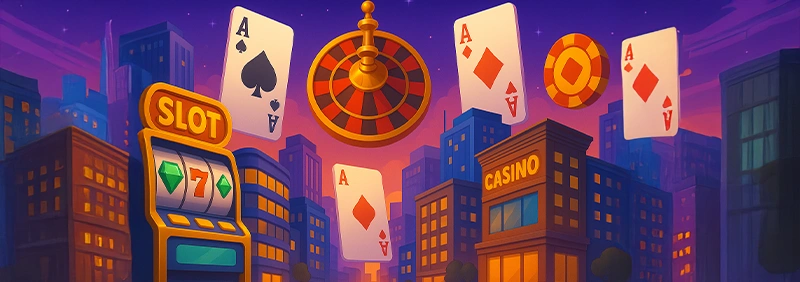Home > Casino Lab > Casino innovation > FOOH Marketing: When Casino Ads Come Alive in the Real World
FOOH Marketing: When Casino Ads Come Alive in the Real World
The gambling industry has always been at the cutting edge of marketing, using spectacle and innovation to capture attention. Today, one of the most powerful tools reshaping the way casinos promote themselves is FOOH marketing (Fake Out Of Home).
By blending 3D animation, augmented reality, and cinematic effects, FOOH campaigns transform landmarks, cityscapes, and screens into dynamic storytelling canvases. For online casinos, this new wave of creative advertising delivers shareable, viral experiences that connect digital brands with the physical world.

What Is FOOH Marketing?
FOOH stands for Fake Out Of Home, a digital simulation of real-world billboards, installations, or spectacles. Unlike traditional out-of-home advertising, FOOH content is produced digitally and then distributed online, usually through social media.
Imagine seeing a giant slot machine projected onto the side of a skyscraper, a roulette wheel spinning above Times Square, or a goddess statue coming to life on Tower Bridge. While these events never actually happened in the physical world, they appear realistic enough to capture imagination and go viral, giving brands global exposure without the logistical limits of real-world installations.
Why Casinos Are Turning to FOOH
Casinos and iGaming operators are natural adopters of FOOH marketing. The industry thrives on spectacle, excitement, and immersion—all elements that FOOH amplifies.
- Shareability: FOOH content is designed for social media virality, multiplying reach far beyond local audiences.
- Cost-effectiveness: Instead of paying for real-world billboards or installations, casinos create visually stunning effects entirely in digital environments.
- Creative freedom: From futuristic slot reels wrapping around skyscrapers to holographic dealers welcoming players in city centers, there are no physical limits to what can be shown.
For a sector that competes fiercely for player attention, FOOH offers a way to stand out in crowded digital markets.
Case Studies in Casino FOOH
Several casino brands and gaming studios have already experimented with impactful FOOH campaigns:
- A leading slot provider unveiled a mythological god towering over Barcelona’s skyline, teasing a new game launch.
- Another operator staged a giant roulette wheel rolling through New York, blending humor and spectacle to promote live dealer games
- Brands entering the Asian market showcased dragons flying above iconic cityscapes, merging cultural symbols with casino themes.
These campaigns not only generated millions of views but also positioned casinos as innovative entertainment brands rather than just gambling platforms.
The Future of FOOH in iGaming
As digital tools like AI-generated video, AR overlays, and Metaverse environments become more accessible, FOOH will continue to evolve. Future campaigns may allow players to interact directly with ads through AR-enabled smartphones or explore immersive casino experiences through VR portals disguised as real-world installations.
By 2030, FOOH may become the standard marketing tool for casinos, merging advertising with entertainment in ways that are both visually stunning and globally scalable.
Conclusion
FOOH marketing is changing the game for casinos. By bringing larger-than-life ads to global landmarks—virtually—casinos can create viral, cinematic moments that captivate audiences and reinforce their brand identity.
For iGaming operators, FOOH is not just about promotion—it is about turning ads into entertainment, making casinos unforgettable in a world flooded with digital noise.
